Practical Tips and Tricks for Being on Camera
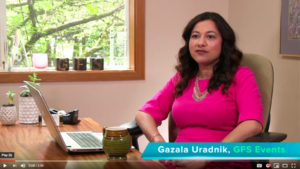 In part 1 of this blog, I talked about four main concepts that will help you go into any video shoot feeling less stressed and more confident. In this second part, I’m going to share my hard-earned lessons on what works best on camera, including how to pace your speaking voice; where to look while you’re being recorded; and finally, what to wear and NOT to wear on camera.
In part 1 of this blog, I talked about four main concepts that will help you go into any video shoot feeling less stressed and more confident. In this second part, I’m going to share my hard-earned lessons on what works best on camera, including how to pace your speaking voice; where to look while you’re being recorded; and finally, what to wear and NOT to wear on camera.
This blog is my gift to you. I learned most of what I know by doing it wrong the first time, and sometimes the second and third time, all of which were caught on camera, of course! But I got it right eventually, and am here to save you as much time and awkwardness as possible – especially if you read this article all the way through, and review it again at a few days before your video shoot.
Let’s start with your voice. A lot of emphasis in video is placed on the visuals such as what to wear (which I address a few paragraphs down), what kind of makeup to use, etc. But no matter how good you look, your message will lose its power if people can’t understand you.
PACE
Unless you have been told you’re a slow talker, try speaking on camera a little slower than you normally would. I don’t mean that you should painfully drag out each word until your audience is ready to scream. I say “slow down a bit” because the adrenalin of being on camera may cause you to speed up. If you’re already a fast talker like me, you can wind up sounding like an incomprehensible chipmunk. So take a few deep breaths before you start, remind yourself not to rush, and do that again between each few takes.
Speaking of taking a breath – when you’re being recorded, pausing is okay. A lot folks get in front of a camera and think they have to keep going. They may worry that pausing will make them sound like they don’t know what they’re talking about. The opposite is true. Pausing in video is a GOOD thing. Most videos are compilation of sound bites. Pausing briefly after each sentence gives your videographer an edit point – that is, an easy place to cut – and is much better for video than stringing sentences together with “ummmmm”, “and I…”, etc. Pausing also has the magic of allowing your audience to catch up with what you’re saying, even if you are a fast talker (Heroic Public Speaking lecture, Nov. 17, 2019, www.heroicpublicspeaking.com).
WHERE TO LOOK
For video blogs and live social media videos, you’ll usually be looking at the camera. The idea is, after all, that you are having a conversation – virtual though it is – with your audience.
For videos where you’re being interviewed, the industry standard is to be looking slightly off-camera. This has several advantages. Looking off-camera is less intimidating that staring at the lens. If you’re being interviewed, you can look directly at your interviewer, which feels more like a conversation than looking away from them and at the camera. For the viewer, the fact you’re not staring at them (i.e., the camera lens) can look more natural and feel less “sales-y”. The “looking off-camera style” also has a big advantage if you’re not using a teleprompter: you can post a script or notes just off-camera, in the direction you’re looking and no one will know!
If you’re being interviewed live – for instance, giving a testimonial at an event – ask, the videographer where to look. Once they tell you, stick with it. Shifting your gaze back and forth from the lens to off-camera and back to the lens can wind up looking a little, well, shifty. It’s not the look you’re going for in a testimonial.
Finally, if the subject matter warrants it, smile from time to time. Part of the advantage of being seen in video is that makes it easier for people to feel like they know you, which helps them trust you, and in turn encourages them to do business with you. The occasional smile supports that goal of being known, liked, and trusted.
WHAT TO WEAR – AND NOT TO WEAR
When it comes to your on-camera wardrobe, there are a few universal guidelines. The first is to wear solids or large prints. Small prints such as thin stripes, polka dots, plaid, and any size of herringbone confuse the camera, and can make you look like your clothes are flickering. Second, wear clothes that are form-fitting, not blousy. Thick sweaters or flowy dresses can look great in person, but they add volume on camera. Third, remember that what looks good in person doesn’t always look good on camera, or in the available light. If you’re being professionally recorded, bring at least two options and ask your videographer what works best. Fourth, plan ahead. Don’t wait until the morning of your shoot to pick out your outfit. Read through the detailed tips below, and try on a couple of choices a week ahead of time, in case you need to go shopping or, at the very least, set time aside for ironing your favorite top.
When it comes to color, the first rule to know is that “high contrast color” can create major issues in video. Video cameras have trouble handling the high contrast between very bright and very dark objects. The lens tends to pick one or the other, and either the light object or the dark one is going to be washed out or indistinct. Functionally, this means that if your skin is dark, avoid wearing bright white. Once your face is properly exposed, your white clothes will be overexposed and have a blurry, glowing look. If your skin is pale, stay away from black. You may end up looking like a floating head. Anyone can use the “wear dark clothing to look slim” trick, but stay away from black. Navy, charcoal, and deep plum can all produce a similar effect without confusing the camera.
Conversely, stay away from colors that are very close to your own skin tone, as you’ll see in the first illustration, below. Bright, bold, colors that complement your skin tone can look great on camera.
DON’T DO THIS:
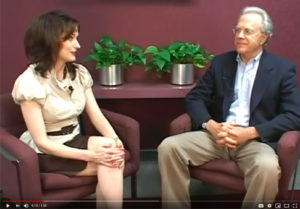
DO THIS:
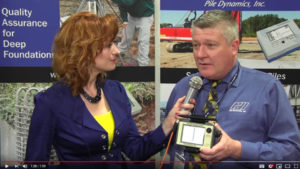
Another thing to remember when choosing your wardrobe is that you’ll probably be using a lapel microphone for your interview. Avoid large dangly necklaces that might bump against the mic; and jangly earrings that make noise when you move your head, because the mic will pick that up. If you’ll be standing, you’ll need a place to clip the battery pack. A belt or a fitted waistband can work; or a neckline on a dress made of sturdy fabric. A battery pack can weigh at least a pound, so it’s not going to attach neatly to chiffon.
Still looking for ideas on how to dress on camera? I recommend making use of the internet and TV for inspiration. Some of the best examples I’ve seen are newscasters, and contestants on “Jeopardy!” Both have been coached on what to wear on camera. “Jeopardy!” competitors even come in a variety of shapes and sizes – just like real people! – so you can get ideas no matter what your body type.
I have additional tips on hair and makeup, on my one-page On-Camera Tips sheet, which you can request by emailing me here. Just put “on camera” in the subject line to get your free copy.




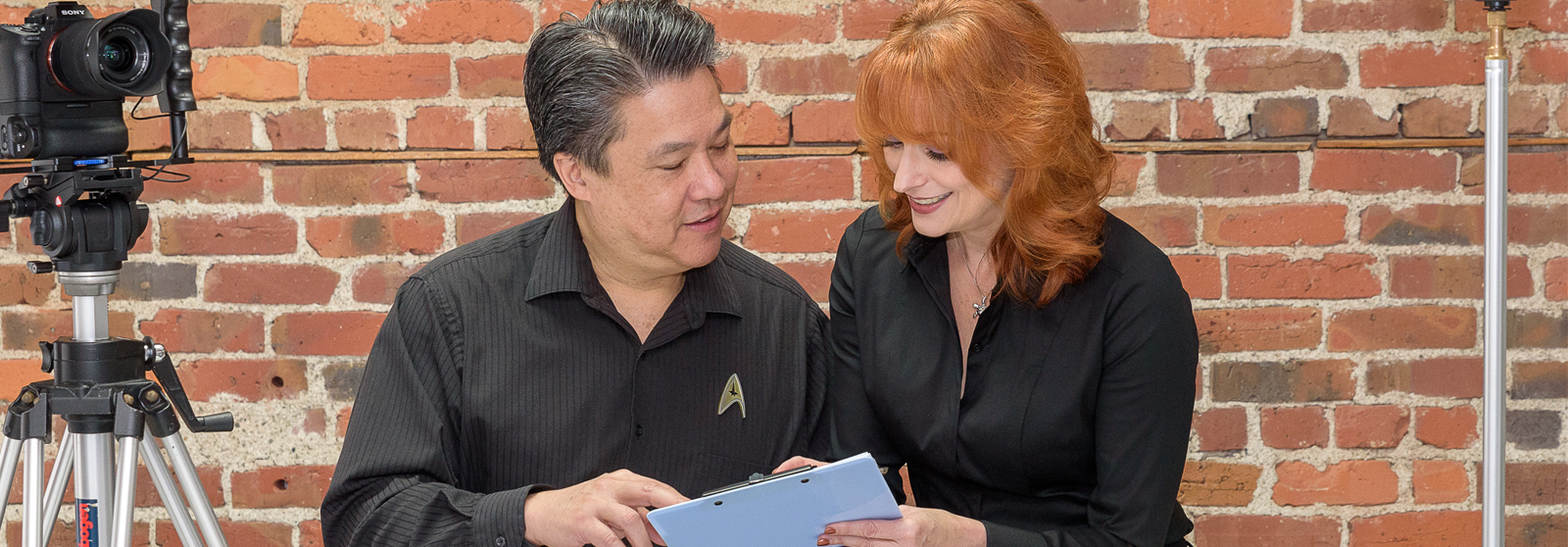
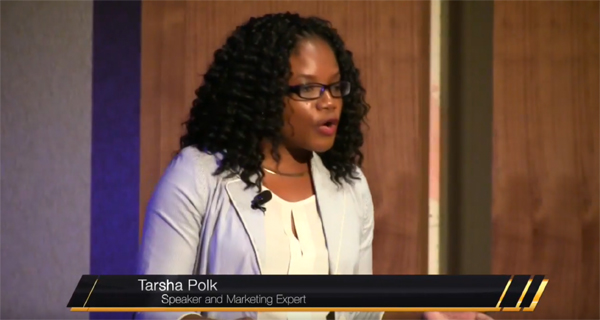







These are very helpful tips! I used your advice on my last video shoot and it turned out so much better. Thank you for such clear, helpful ideas.
I’m so glad to hear it was helpful! I saw your video post – looks great!
Great tips!